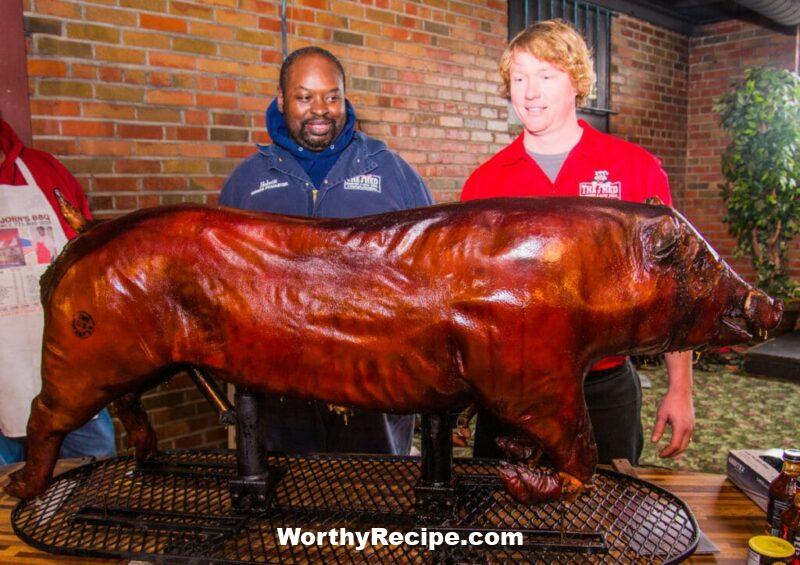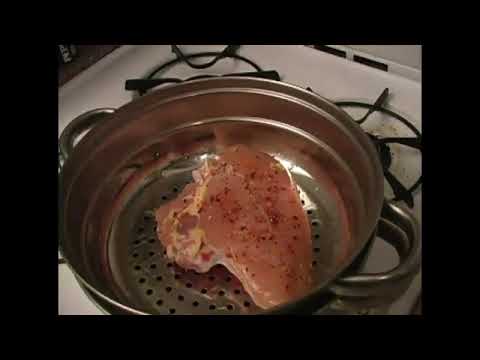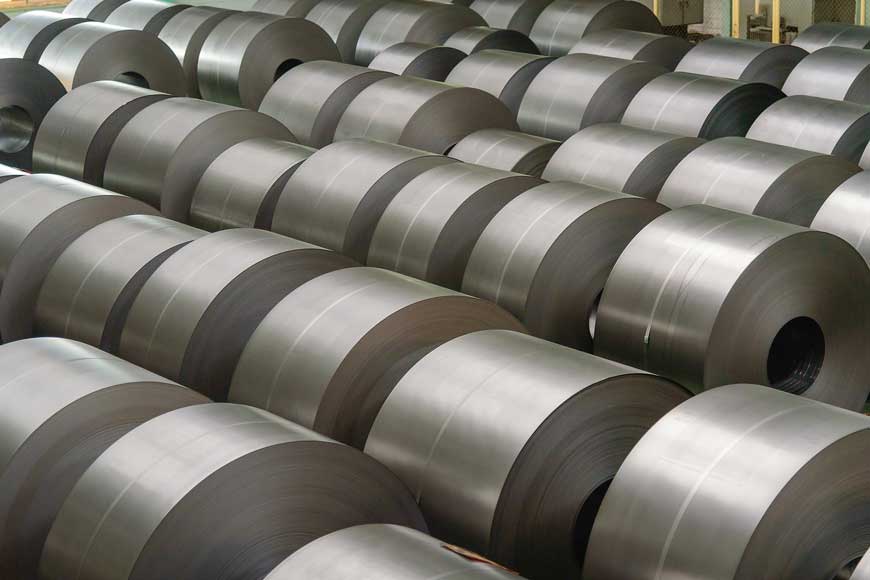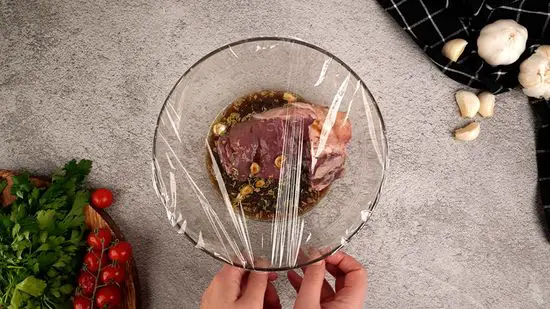How to Cook a Whole Pig in the Ground: A Comprehensive Guide
Cooking a whole pig in the ground is an age-old tradition that spans many cultures and continents. From Hawaii to the Philippines to South Africa, cooking a whole pig in the ground is an essential centerpiece of any large gathering or celebration, from weddings and birthdays to funerals and religious festivals. In this comprehensive guide, we’ll walk you through the step-by-step process of preparing, cooking and serving a whole pig in the ground, as well as share tips on safety, sustainability, and cultural significance.
Preparing the Pig and Pit
The first step in cooking a whole pig in the ground is selecting the right pig. Make sure you choose a fresh pig that weighs between 100-200 lbs., depending on the number of guests you’re expecting. It’s also important to note that BBQ pigs are bred specifically for roasting and have thinner skin than regular pigs. When choosing your pig, ask your local butcher or farmer about their selection of BBQ pigs.
Next, you’ll need to build your pit. Ideally, your pit should be at least 3 feet deep and 4 feet wide. You can dig it by hand or rent a backhoe for larger projects.
Once you’ve dug your pit, it’s time to prepare your pig for cooking. First, remove its fur with a scraper or razor blade. Then rinse it thoroughly inside and out with water. Finally, stuff the cavity with aromatics like garlic cloves, onions, citrus fruits, and herbs such as rosemary or thyme. Secure the legs together with butcher twine.
Setting up the Cooking Process
The key to cooking a whole pig in the ground is using hardwoods that give off a slow and steady heat. Oak and hickory are popular choices. Avoid using softwoods like pine or cedar because they can emit toxic smoke.
When starting your fire, you’ll want to use a mixture of starter logs and kindling to light the hardwoods. Once the fire is started, let it burn for several hours until the wood has burned down to hot embers. Shovel the embers to one side of the pit so that you can add more fuel on the opposite side as needed during the cooking time.
Cooking the Pig
Before placing your pig in the pit, wrap it in banana leaves and then burlap sacks to keep in moisture and flavor. Lay it in the center of your pit, positioned directly over the hot coals. Cover the pig with sand or dirt, making sure there aren’t any air pockets between the body of the pig and the ground. The dirt will help to regulate the temperature by creating a natural oven effect.
For best results, you should cook your whole pig at around 250-300 degrees Fahrenheit for at least 8-12 hours. Plan on adding hot coals every 45 minutes to keep your fire going throughout the day. Use a probe thermometer to check for an internal temperature of 160-170 degrees Fahrenheit in the thickest part of your pig before removing it from the pit.
Uncovering and Serving the Pig
Once your pig has cooked for several hours, it’s time to uncover it and let it rest before carving. You’ll need some muscle power (and maybe some extra hands) to carefully remove all of the dirt from the top of your pit without disturbing your pig.
When removing your pig from your pit, make sure you’re wearing heat-resistant gloves or mitts to protect your hands from the hot surface. Let your pig rest for at least 30 minutes before carving with a sharp knife and serving with sides like coleslaw, mac n cheese, or baked beans. Don’t forget to offer your guests a variety of sauces, too!
Troubleshooting Tips
Even the most experienced pitmasters can run into problems during a long cooking session. If you notice that your fire is too hot or too cool, adjust the amount of wood you add to the pit accordingly. If you’re having trouble keeping a consistent temperature, try covering your pit with a tarp or blanket to help trap heat inside.
Safety Considerations
When cooking a whole pig in the ground, it’s important to take extra precautions to prevent injury or illness. Always wear gloves and safety goggles when handling your fire and pit. Make sure that all of your guests know not to touch the hot surface or embers and keep pets and children at a safe distance. Additionally, be vigilant about food safety by properly storing and handling any leftover meat to avoid the risk of bacterial contamination.
Cultural Significance of Cooking a Whole Pig in the Ground
Throughout history, cooking a whole pig in the ground has been an important cultural tradition that brings people together for food, conversation and celebration. In many cultures, roasting an entire animal is seen as a way to honor its sacrifice and respect its life force.
In Hawaii, for example, cooking a whole pig in the ground is known as “imu” or “ka’lua pig” and is often served during luaus and other special occasions. In parts of South Africa, it’s called “spitbraai” and is a popular way to cook lamb or beef over an open flame.
Sustainability Considerations
While cooking a whole pig in the ground can be a delicious and memorable experience, it’s important to consider the environmental impact of this tradition. Pig farming can have a significant carbon footprint, and cooking with firewood can contribute to deforestation and air pollution.
To make roasting a whole pig more sustainable, consider buying meat from a local farmer who practices sustainable farming methods or using a propane tank instead of wood to power your fire. Additionally, make an effort to use all parts of the pig to reduce waste and promote ethical consumption.
Conclusion
Cooking a whole pig in the ground is an unforgettable experience that’s both challenging and rewarding. With the right preparation, equipment, and mindset, anyone can learn how to transform a humble pig into a mouthwatering feast that brings friends, family, and strangers together. Whether you’re honoring an ancient tradition or creating new memories with loved ones, cooking a whole pig in the ground is sure to be an unforgettable adventure.
Can I really cook a whole pig in the ground?
Yes, it is possible to cook a whole pig in the ground. This traditional cooking method can yield delicious and succulent meat that is perfect for large gatherings.
How long does it take to cook a whole pig in the ground?
The cooking time for a whole pig in the ground depends on the size of the animal. Generally, a 50-pound pig will take around 8-10 hours to cook, while a larger pig could take up to 24 hours. It is important to monitor the temperature carefully during cooking to ensure proper cooking and food safety.
What equipment do I need to cook a whole pig in the ground?
To cook a whole pig in the ground, you will need a large pit or hole dug into the ground, as well as rocks or bricks to line the pit and hold heat. You will also need plenty of charcoal or wood for fuel, and some kind of spit or rotisserie system to turn the pig during cooking.
What are some tips for cooking a whole pig in the ground?
One of the most important tips for cooking a whole pig in the ground is to start early and give yourself plenty of time. It is also crucial to use high-quality meat and seasonings and to monitor the temperature carefully throughout cooking. Finally, make sure to have plenty of help on hand for digging the pit, assembling equipment, and turning the pig during cooking.






